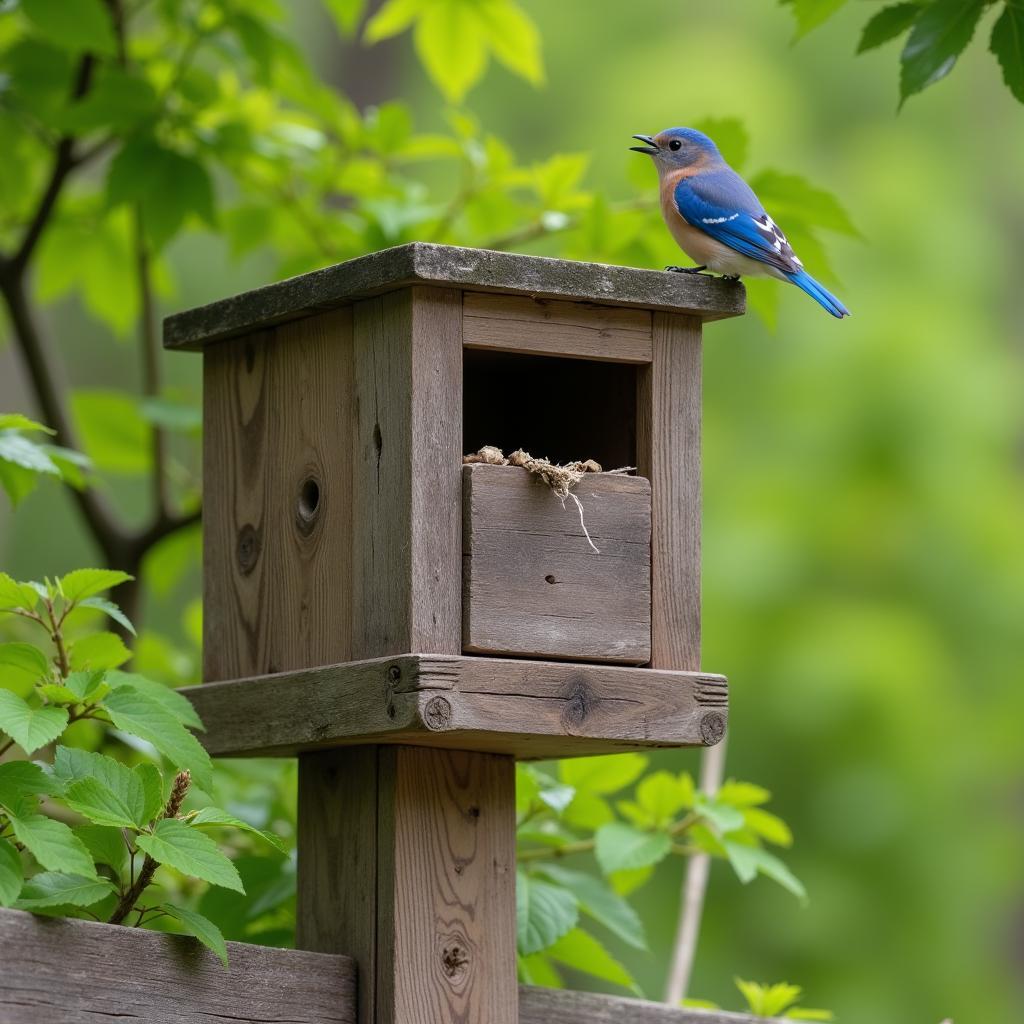The North Carolina Bluebird Society (NCBS) is dedicated to the conservation of bluebirds and other native cavity-nesting birds. One of the ways the NCBS achieves this is by encouraging the documentation and sharing of bluebird sightings and nesting successes through photography. North Carolina Bluebird Society Photos offer a valuable glimpse into the lives of these beautiful birds and the vital work being done to protect them.
The Power of Photography in Bluebird Conservation
Photos play a crucial role in understanding bluebird behavior, monitoring populations, and raising awareness about conservation needs.
- Identifying Bluebird Species: North Carolina is home to three bluebird species: Eastern, Western, and Mountain. Photos help distinguish these species based on subtle differences in plumage, size, and habitat.
- Monitoring Nesting Success: By documenting nesting activities, such as egg laying, incubation, and fledgling development, photographers contribute valuable data to track bluebird populations and identify potential threats.
- Educating and Inspiring: A captivating image can inspire people to learn more about bluebirds, their ecological importance, and how to support conservation efforts.
 Bluebird perched on a nesting box
Bluebird perched on a nesting box
Tips for Capturing Stunning North Carolina Bluebird Society Photos
Whether you are a seasoned photographer or a beginner with a smartphone, there are ways to capture beautiful and meaningful bluebird photos while respecting their space and well-being.
- Patience is Key: Bluebirds can be elusive, so spend time observing their behavior and anticipate their movements. Avoid disturbing nests or approaching too closely.
- Natural Light is Best: Soft, early morning or late afternoon light enhances the bluebirds’ vibrant colors and minimizes harsh shadows.
- Focus on Composition: Use natural elements like branches, flowers, or nesting boxes to create visually appealing compositions.
- Tell a Story: Capture a sequence of photos that document different aspects of bluebird behavior, such as feeding, nesting, or interacting with their young.
Sharing Your Photos and Contributing to Conservation
By sharing your North Carolina Bluebird Society photos, you contribute to a growing database of knowledge that informs conservation efforts.
- Submit to NCBS: The North Carolina Bluebird Society welcomes photo submissions for its website, publications, and social media channels, providing valuable exposure for your work.
- Join Online Communities: Engage with fellow bird enthusiasts in online forums and social media groups dedicated to bluebird conservation.
- Use Hashtags: When sharing photos online, use relevant hashtags like #NCBluebirds, #BluebirdConservation, and #CitizenScience to connect with a wider audience.
Conclusion
North Carolina Bluebird Society photos are more than just beautiful images; they are powerful tools for conservation, education, and appreciation of these charismatic birds. By capturing and sharing your own bluebird encounters, you can contribute to the protection and enjoyment of these feathered wonders for generations to come.
FAQs
1. How can I attract bluebirds to my yard?
2. What do bluebirds eat?
3. When is the best time of year to see bluebirds in North Carolina?
4. How do I distinguish between male and female bluebirds?
5. What are some common threats to bluebirds?
For further information on supporting bluebird conservation, visit our website or contact us directly.
Hotline: 02043854663
Email: [email protected]
Address: Khu 34, Bắc Giang, 260000, Việt Nam
Our dedicated customer support team is available 24/7 to assist you.